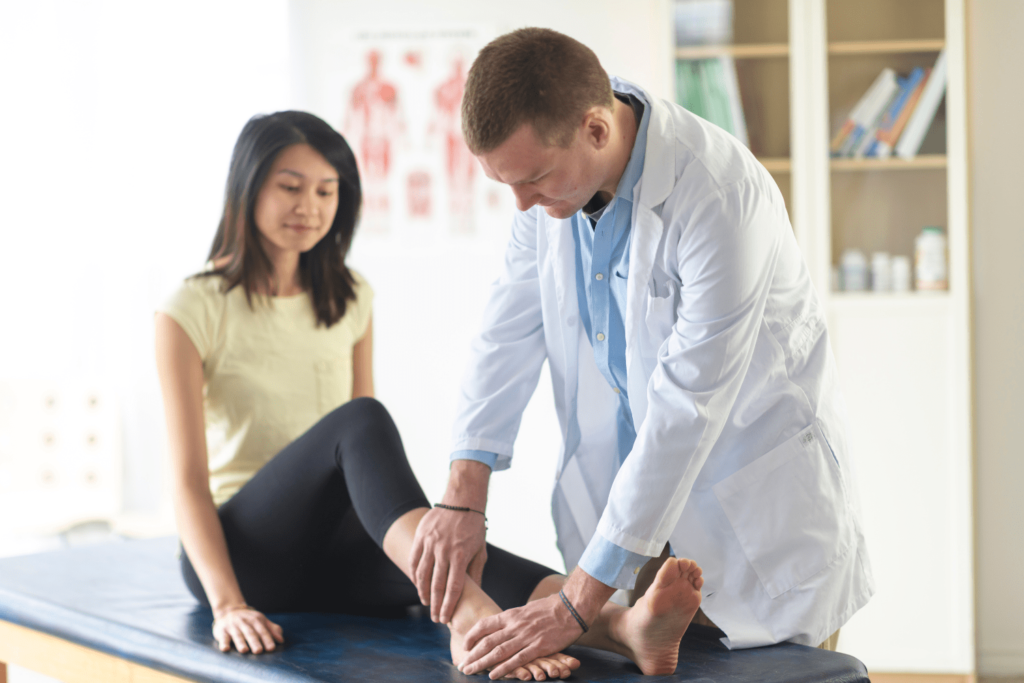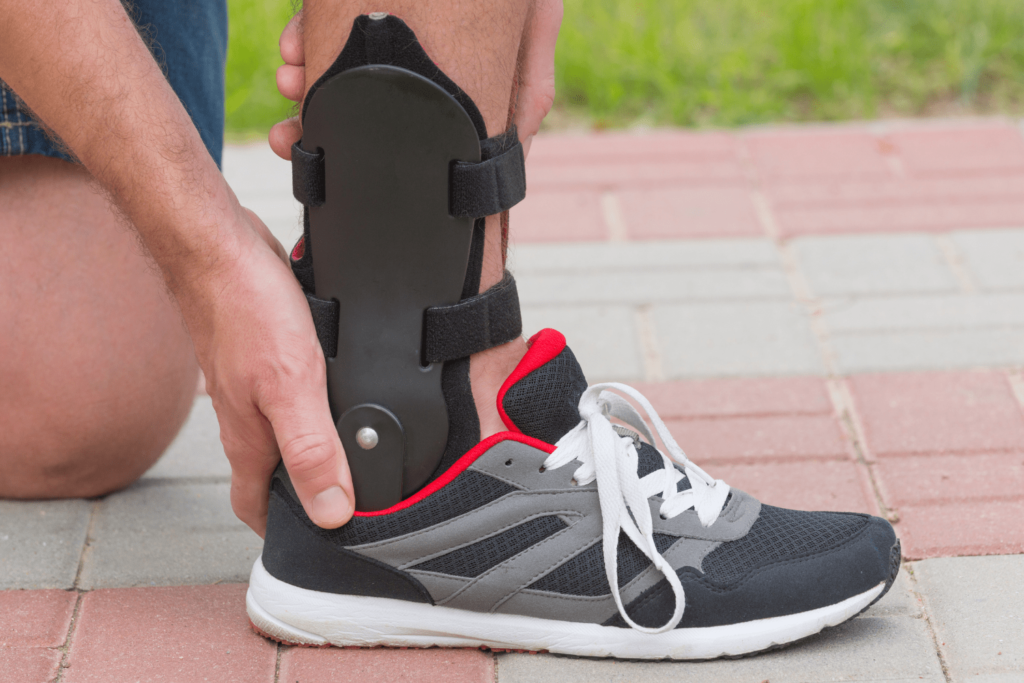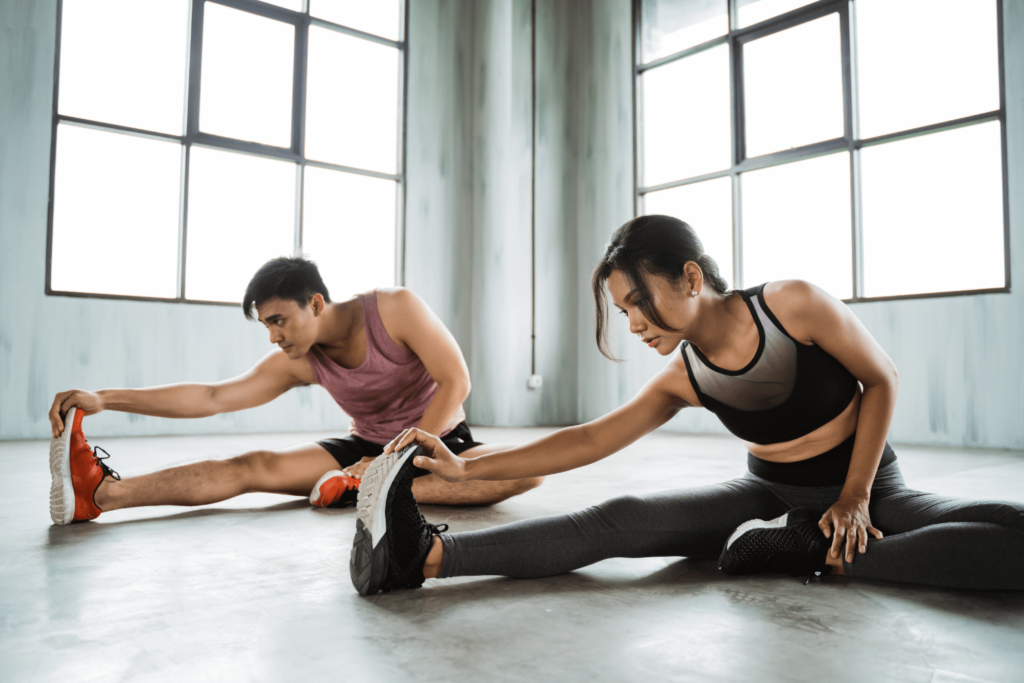Ankle injuries are some of the most common, particularly in athletes engaged in high-intensity sports like soccer, basketball, or running. The ankle, despite being a relatively sturdy joint, is vulnerable to sprains, strains, and tears, especially with the unpredictable movements athletes often make during play. One of the most serious injuries involves ligament damage, which can severely affect an athlete’s ability to perform. When such injuries occur frequently or fail to heal properly, they can lead to chronic ankle instability, requiring more extensive treatment. Ankle ligament reconstruction is a surgery designed to repair or replace torn or damaged ligaments and restore the ankle’s stability.
For athletes, returning to the field, court, or track after such surgery can seem daunting. But with the right approach, a detailed rehabilitation plan, and patience, athletes can rebuild their strength and mobility, ensuring a strong comeback.



The ankle joint is supported by a network of ligaments that provide stability and ensure controlled movements. The most commonly injured ligaments in the ankle are the anterior talofibular ligament (ATFL) and the calcaneofibular ligament (CFL). Ligament injuries in the ankle can range from mild sprains to severe tears that require surgical intervention.
Ankle ligament reconstruction typically comes into play when conservative treatments, such as physical therapy or bracing, fail to restore the joint’s stability. The surgery involves using a tendon graft, often taken from the patient’s own tissue (autograft) or from a donor (allograft), to replace the damaged ligament. The goal is to restore proper anatomical alignment and function to the ankle joint.
For athletes, this procedure is often a last resort when recurring instability threatens their performance or leads to repeated injury. After the surgery, the healing process becomes a journey toward regaining full functionality and strength.


After the surgery, the primary focus shifts to reducing inflammation and ensuring proper healing. In the first 48-72 hours, the priority is to manage pain, swelling, and bruising. Ice packs and elevating the foot will help reduce inflammation, while rest is crucial to prevent any additional stress on the healing ligament. Medications prescribed by the surgeon should be adhered to for pain management, but athletes should avoid overexerting themselves during this phase.
The use of a protective boot or cast during this early phase helps immobilize the ankle, providing stability and preventing accidental movements that could jeopardize the recovery. During this time, the athlete must avoid weight-bearing activities, and crutches are often recommended to help with mobility without putting weight on the affected leg.
Once the initial swelling and pain subside, the rehabilitation process can begin. The primary focus of this phase is regaining the range of motion in the ankle joint. Immobilization during the early healing stages can result in stiffness, so gentle exercises are crucial to reintroduce flexibility to the joint.
At this stage, passive range-of-motion exercises are often recommended. These exercises involve gently moving the ankle in all directions to maintain flexibility. The aim is to prevent the ankle from becoming too stiff and to prepare it for more demanding movements in the later stages of recovery. Stretching exercises, focusing on the Achilles tendon and calf muscles, are also critical to ensure that the whole lower leg works in unison.
Therapeutic ultrasound or electrical stimulation may be used to accelerate tissue healing and further reduce inflammation. The role of physical therapy during this early stage cannot be overstated, as therapists help monitor progress and ensure that the exercises performed are safe and effective.
As the ankle begins to regain motion and the surgeon gives clearance, the next phase of rehabilitation emphasizes strengthening the muscles around the joint. Strong muscles provide better support and reduce the strain on the ligaments, making the ankle less prone to future injuries.
Isometric exercises, where the muscles are contracted without movement, are often employed to help activate the muscles around the ankle without stressing the healing ligaments. Exercises such as calf raises, toe taps, and ankle rotations using resistance bands are beneficial for targeting the key muscles in the lower leg.
Weight-bearing exercises are introduced gradually. Initially, athletes might begin with partial weight-bearing activities and progress to full weight-bearing as tolerated. The physical therapist will closely monitor this process to ensure that there is no excessive strain placed on the ligament graft.
It’s critical to balance rest with activity during this stage, as pushing too hard too soon can hinder healing. Building strength too quickly may risk stretching or damaging the newly reconstructed ligaments, leading to a longer recovery.
For athletes, regaining agility and proprioception is an essential part of rehabilitation. Proprioception refers to the body’s ability to sense its position in space, and this is key to preventing re-injury once the athlete returns to their sport. Ankle injuries can often impair proprioception, leading to the athlete’s reduced ability to control the joint during high-intensity activities.
To address this, balance exercises are introduced, typically using balance boards or wobble cushions. Athletes are tasked with maintaining stability while standing on one leg or performing dynamic movements. This not only improves proprioception but also engages the smaller stabilizing muscles of the ankle that are often neglected in typical strength exercises.
Agility drills such as lateral shuffling, cone drills, and low-intensity jumping exercises become part of the routine at this stage. These exercises mimic the types of movements that athletes perform during their sport and help to rebuild confidence in the ankle’s stability.
Once strength, balance, and mobility have been sufficiently restored, the athlete can begin sport-specific training. For instance, if the athlete is a soccer player, drills that involve running, cutting, and kicking will be introduced. For basketball players, agility drills involving jumping and landing are critical.
At this stage, plyometric exercises are commonly used to rebuild explosive power. Plyometrics include movements like box jumps, bounding, and hopping, which help in reconditioning the muscles to handle the dynamic movements required during sports. Functional training that mimics the intensity of the sport—without actual game participation—can help bridge the gap to a full return.
Gradual return to sport is crucial, and athletes should be cautioned against rushing the process. Most sports medicine professionals advise waiting until the athlete has regained near full strength, balance, and mobility. Additionally, functional performance testing, such as running tests, cutting drills, and jumping, may be used to ensure the athlete is physically ready.



Even after a full recovery, ongoing care is necessary to prevent re-injury. Athletes should continue with a maintenance routine, including strengthening exercises and balance training, to ensure the ankle remains stable. Wearing appropriate footwear during play and using ankle braces or taping during high-risk activities can offer additional support. Regular check-ups with a sports medicine professional can ensure that the ankle remains healthy and ready for the demands of the sport.
Ankle ligament reconstruction is a major procedure, but with the right rehabilitation strategy, athletes can rebuild their strength and functionality, coming back stronger and more resilient than before. From managing pain in the early stages to regaining mobility, strength, and agility, every step of the recovery process is important. Patience, dedication, and a comprehensive rehabilitation program that includes physical therapy, sport-specific training, and mental readiness will guide athletes through a successful recovery. By adhering to these principles and focusing on long-term ankle health, athletes can minimize the risk of re-injury and get back to doing what they love, stronger than ever.
Elevate your performance with Apex Sports Clinic! Schedule an appointment today for personalized, expert care in optimizing your athletic potential.


